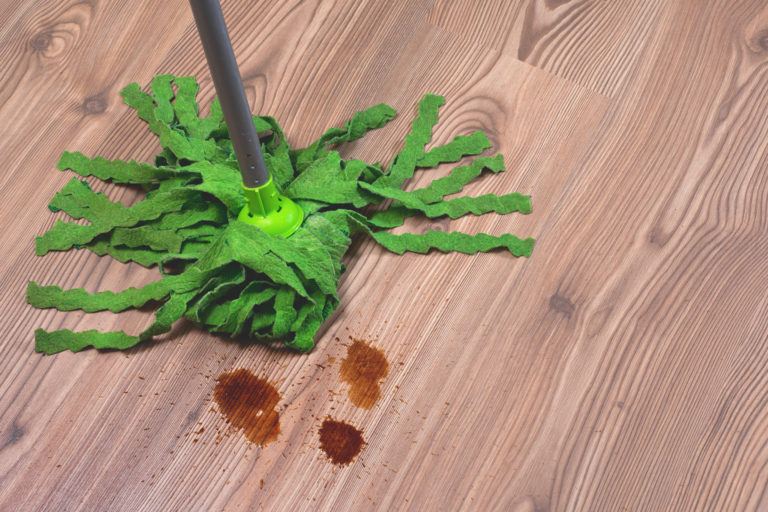
Quick Tips
Picture this: You stride into your living room, coffee in hand, only to slip on an unseen layer of grime, sending your beverage flying. Your once-pristine laminate floors now resemble a battlefield of spills and scuffs. Ignoring your flooring isn’t just a cosmetic crime—it’s an invitation to deterioration. In this guide, we’ll walk you through 5 straightforward steps to rejuvenate your laminate floors. With a touch of dark humor and practical advice, you’ll learn how to banish dirt, prevent damage, and keep your floors gleaming.
Why Clean Your Laminate Floors?
Laminate flooring is celebrated for its durability and aesthetic appeal, but it’s not invincible. Accumulated dirt and spills can lead to scratches, warping, and unsightly stains. Regular cleaning not only preserves the floor’s appearance but also extends its lifespan, saving you from costly replacements. Plus, a clean floor reduces allergens, making your home a healthier environment. If you’re also dealing with scuffed-up tile, check out How to Clean Tile Floors for a more specialized approach.
General Supplies You’ll Need
- Microfiber Dust Mop or Soft-Bristled Broom: Essential for capturing dust and debris without scratching the surface.
- Vacuum Cleaner (with Hard Floor Setting): To remove dirt from crevices and along edges.
- Microfiber Mop: For damp cleaning without excessive moisture.
- Distilled White Vinegar: A natural cleaner that cuts through grime while being safe for laminate.
- Warm Water: To dilute cleaning solutions.
- Spray Bottle: For applying cleaning solutions evenly without over-saturating the floor.
- Soft, Absorbent Cloths or Towels: To dry the floor and buff to a shine.
- Furniture Pads: To prevent scratches from moving furniture.
Step-by-Step: How to Clean Your Laminate Floors
1. Swiftly Address Spills
The moment a spill occurs, channel your inner superhero and tackle it immediately. Liquids left unattended can seep into seams, causing swelling and warping. Use a soft cloth to blot (not wipe) the spill, absorbing as much liquid as possible. Remember, in the battle against spills, procrastination is your enemy.
2. Clear the Area
Before diving into cleaning, remove all furniture and rugs from the room. This not only provides unobstructed access but also prevents dirt from hiding under objects. When moving furniture, lift instead of dragging to avoid scratching the floor. If lifting isn’t feasible, place soft pads or towels under furniture legs to glide them gently.
3. Eliminate Loose Debris
Begin with a thorough sweep using a microfiber dust mop or a soft-bristled broom, moving in the direction of the floorboards to collect debris from between the seams. For an extra layer of cleanliness, use a vacuum cleaner set to hard floor mode. Ensure the beater bar is off to avoid unnecessary damage.
4. Damp Mop with Care
Mix a solution of one cup distilled white vinegar and one gallon of warm water. Pour this into a spray bottle. Lightly mist a section of the floor and immediately mop it using a microfiber mop, ensuring the mop is only slightly damp. Excess moisture is a sworn enemy of laminate floors, leading to warping and damage. For stubborn spots, apply a bit of the solution to a cloth and gently rub the area.
5. Dry and Buff
After mopping, it’s crucial to remove any residual moisture. Use a soft, absorbent towel to dry the floor thoroughly. Buffing the surface in circular motions can enhance shine and ensure no water spots remain. Drying immediately helps prevent moisture from seeping into the seams.
Additional Tips and Preventive Measures
- Regular Maintenance: Incorporate floor cleaning into your weekly routine to prevent buildup and maintain appearance.
- Use Appropriate Cleaners: Avoid oil-based or abrasive cleaners, as they can dull or scratch the finish. Stick to solutions recommended for laminate flooring.
- Protect High-Traffic Areas: Place rugs or mats in areas with heavy foot traffic to shield the floor from wear and tear.
- Furniture Pads: Attach felt pads to the bottom of furniture legs to prevent scratches when moving items.
- Avoid Excess Water: Never use a wet mop or allow water to pool on the floor. Laminate flooring is sensitive to moisture, which can cause irreversible damage.
Common Pitfalls to Avoid
- Using Excessive Water: Overly wet mops can cause water to seep into seams, leading to swelling and warping.
- Harsh Cleaning Agents: Bleach, ammonia, and abrasive cleaners can strip the protective layer and damage the finish.
- Neglecting Spills: Allowing liquids to sit can stain and damage the floor. Prompt attention is essential.
- Skipping Protective Measures: Failing to use furniture pads or rugs can result in scratches and accelerated wear.
- Ignoring Manufacturer Guidelines: Always adhere to the care instructions provided by your flooring’s manufacturer to prevent voiding warranties and ensure proper maintenance.
Embrace the Beauty of Clean Laminate Floors
A spotless laminate floor isn’t just about aesthetics; it’s a testament to diligent care and respect for your living space. By following these uncomplicated steps, you not only enhance the visual appeal of your home but also contribute to a healthier environment. So, the next time you find yourself staring at a mysterious spot on your floor, remember: a little effort goes a long way in preserving the elegance and longevity of your laminate flooring. If your battle against dirt extends beyond laminate, check out How to Clean Hardwood Floors for more floor-cleaning strategies.